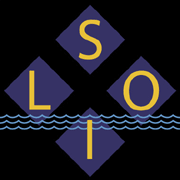|
SLOI and the WDNR Self-Help Monitoring Volunteer Program |
The more data we obtain for the largest variety of lakes, the better the models we can develop to predict trophic state in unsampled lakes lakes.
And the problem isn't just sampling many lakes. Timing is also of importance. Sampling on any date won't work. We need samples taken as close to the date of satellite overpass as possible. Based on our experience, the lakes should be sampled within three days of a satellite overpass. This is because water transparency and algal biomass can vary dramatically within weeks. Even within days!
That's where a collaboration with a lake monitoring volunteer program becomes indispensable: without volunteers, it would be impossible to collect enough data on enough lakes and on the right dates.
If you are a volunteer and participate in this project, here you will find information about when to sample your lake. You can also see what other lakes are part of the volunteer program.
If you are not a volunteer but would be interested in learning more about this Wisconsin DNR program, please contact Maureen Janson.
| 1 |
Map of lakes in the self-help monitoring program |
| 2 |
Table of self-help lakes and satellite path/row |
| 3 |
Map and dates of satellite overpass |
4 |
First Statewide Results! January - 2003 |
Here's how to find out when to sample your lake:
| 1st |
Go to link (2) above and look for the name of your lake in the table. Note that the table is ordered by county and, within each county, by lake name. |
| 2nd |
Write down the path and row of Landsat that corresponds to your lake. Some lakes may have two of these and, among them, in some cases one of the will be qualified as 'edge'. This means that the lake is near the edge of a satellite path/row, and it should be sampled preferably on the dates corresponding to the 'non-edge' path and row. But remember, all data are valuable! |
| 3rd |
Go to link (3) above and look at the dates that the Landsat satellite will pass over the path and row that you lake belongs to. |
[top]
Would you like to learn more about satellites and remote sensing? We have put together a selection of sites with interesting content and astonishing visuals in our "Lakes from Space" page.
To whet your appetite, here are some quick links:
1 |
MODIS ImageServer (Wisconsin Imagery) |
| 2 |
Landsat program at NASA |
| 3 |
Landsat program at USGS |
| 4 |
Landsat.org (global data co-op) |
| 5 |
Real-time 3-D orbit model for all satellites |
[top]
|
On the SLOI web |
|
| |
What is SLOI? |
| |
Self-Help Program |
| |
Building a model |
| |
Lakes from Space |
| On this page |
| Resources for volunteers |
| Links to Landsat Pages |
| Quick Links |
| WDNR Self-Help Lake Monitoring Program |
[what is SLOI][self-help][build a model][lakes from space]
